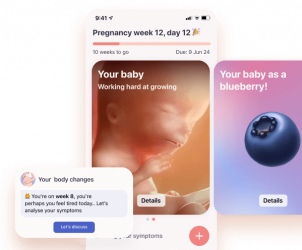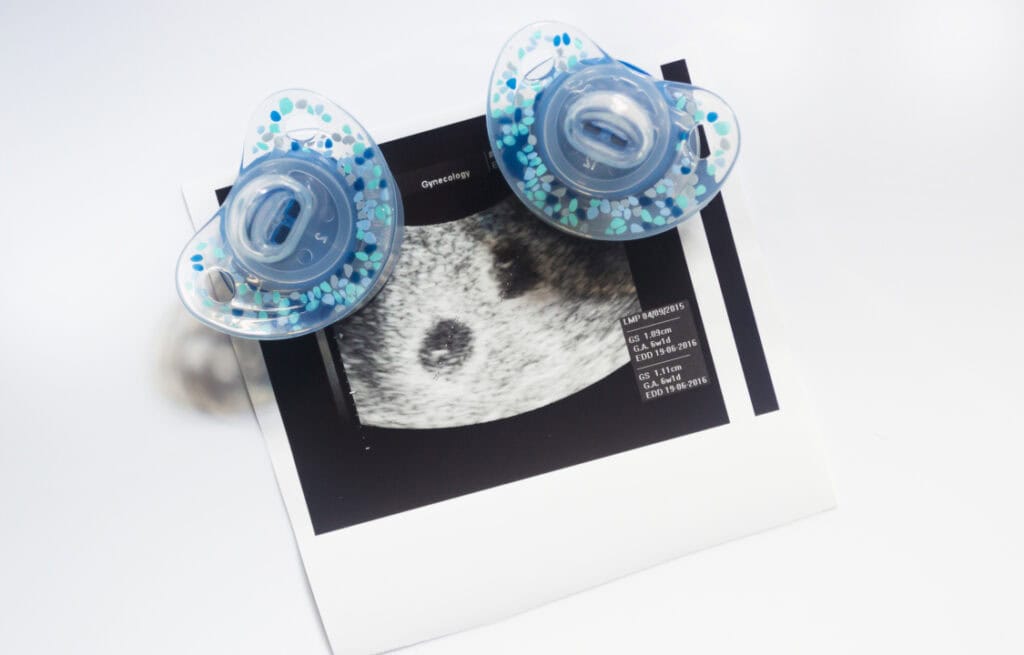Femia > Health Library > Pregnancy > Pregnancy health > How to get short-term disability approved while pregnant by a doctor
How to get short-term disability approved while pregnant by a doctor

- Updated Feb 27, 2025
- Published
CRAFTED BY HUMAN
Crafted by human At Femia, we provide accurate and up-to-date information at every stage of your journey, from trying to conceive, pregnancy and postnatal support. All content is created by a real person based on in-depth research and own professional experience. Femia ensures that you will receive expert advice, strict accuracy and a personalized approach from our authors/medical experts. Learn more about our editorial policy.
FACT CHECKED
Fact checked At Femia Health, we maintain the highest standards of editorial excellence in delivering content focused on helping you conceive, guiding you through pregnancy, and supporting you postpartum. Explore our content review principles to learn how we ensure the accuracy and quality of our health and lifestyle tips for every stage of your journey.
To get short-term disability approved by a doctor when pregnant, schedule a consultation with your healthcare provider to explain your specific symptoms and the impact on your ability to work. Provide any necessary documentation, and file a claim to your insurance company.
According to the Bureau of Labor Statistics, only 27% of civilian workers had paid family leave in 2023, and 90% had access to unpaid family leave. So, if you are reading this article because you don’t have paid maternity leave, or it is too short to cover your post-birth healing, you’re not alone.
The law that most US women rely on is the Family and Medical Leave Act (FMLA), which states that their job will be waiting for them for up to 12 weeks after childbirth and adoption. While this law applies to the majority, state and local laws may have some restrictions, so make sure to double check the regulations for your area. The main concern about this law is that it does not require companies to compensate for that time off, so many women are turning to short-term disability coverage to help offset the lack of pay.
If this situation applies to you, let’s explore what options you may have.
What is short-term disability insurance?
Only California, Colorado, Connecticut, the District of Columbia, Hawaii, Massachusetts, and New Jersey require companies to offer paid family leave for pregnancy and childbirth.
Whether you have an opportunity to get this paid leave or not, short-term disability insurance can increase funds available while you heal after giving birth. Even though it is uncommon to get both disability and paid maternity leave for the same period, some may still use the disability benefits to recover from the birth.
Short-term disability insurance works by replacing all or a specific percentage of your income when you’re temporarily unable to work due to either non-work-related injury or medical condition. The reason for women choosing this insurance is that money is paid directly to them, giving women a freedom in choosing how best to allocate these funds.

When will I be considered disabled when pregnant?
Pregnancy alone isn’t considered a disability. The ADA’s definition of disability is an impairment that substantially limits a person from one or more major life activities.
According to the Americans with Disabilities Act Amendment Act (ADAAA), there is no specific rule on how long an impairment must last for it to be considered substantially limiting. Therefore, daily activities like walking, standing, and lifting might be affected by disability related to pregnancy.
Simply put, you may be considered disabled as a result of pregnancy and after giving birth if it is impossible for you to perform the majority of your job functions consistently. However, this decision should be made by your physician.
What are short-term disability pregnancy benefits?
Getting short-term disability pregnancy status is the ability to receive a portion of your monthly income until you can fully perform your work responsibilities or until the end of your benefit period—whichever comes first. It’s important to note that short-term disability benefits usually last three to six months. The length of short-term disability pregnancy coverage and type of disabilities covered will also depend on the definition of disability stated in the employer’s legal documents, so asking for them ahead of time is always a good idea.
The percentage of your usual income that will be covered varies on a case-by-case basis. In contrast to health insurance, which is paid to a hospital to cover specific treatments or care you received, disability payments are paid directly to you, so there are no requirements on how to spend them.
Do complications related to your pregnancy mean more benefits?
This might be another area of disagreement with your insurance company, because there are often strictly defined policies about what qualifies as a disability. For example, even if your doctor prescribes bed rest because of mild complications or conditions developed during pregnancy, an insurance company may claim that you don’t meet their criteria for having a disability.
In situations like these, a disability lawyer can help you navigate the legal language and maximize the benefits you receive.
On the other hand, severe medical issues during pregnancy or birth may lead to greater benefits.
FMLA vs STD: what to choose if both are available?
Short-term disability (STD) is particularly designed for cases where an employee is unable to perform their job at normal capacity because of health issues. In contrast to FMLA, STD does not guarantee job protection. So, if you take time off from work for health issues and receive disability insurance, your employer is not obligated to keep your role available for you when you want to come back.
FMLA, on the other hand, protects job security if you have to take medical leave, whether paid or unpaid. The other key difference from STD is that FMLA is available when either an employee or a member of their family has a medical condition that limits the employee’s ability to perform their job. This may include maternity leave, paternity leave, adoption, or caring for a family member with a severe health condition.

Pre-existing coverage exclusion: what you want to know
If you were pregnant at the time your policy took effect, you can expect denial of a short-term disability claim if the policy contains a pre-existing coverage exclusion.
If you purchase short-term disability coverage by yourself rather than getting it at work, we recommend purchasing it at least a year before you want to use it.
Step-by-step guide for getting approved short-term disability while pregnant
In order to receive short-term disability status and its benefits, you will have to go through several steps. Unfortunately, disability insurance companies can only approve the status when you provide the required document package.
So, let’s go through the steps you’ll have to take:
Step 1. Review your plan or policy documents
Once you decide to seek compensation, your first step is to review your employer’s short-term disability (STD) policy to confirm if pregnancy is covered and to understand any legal exclusions. Common exclusions may include pre-existing conditions, complications not directly related to pregnancy, or if you haven’t been employed long enough to qualify. Some policies may also exclude coverage if you haven’t worked the minimum required hours or if the pregnancy is considered elective, such as with surrogacy or non-medical elective procedures.
Next, verify the required documents and deadlines for filing your claim. Be sure to discuss the process with both your insurance provider and your HR department to get a clear explanation of what is needed to submit your claim properly.
Step 2. Collect your evidence
Once you learn what documents your employer may require, you will need to gather all relevant medical and personal data to support your disability status. Pregnancy-related conditions that may qualify as disabling include severe morning sickness (hyperemesis gravidarum), gestational diabetes, preeclampsia, and preterm labor. These conditions can limit your ability to perform essential work functions, and your doctor can certify your need for disability leave.
Key documents may include:
- Medical records: Detailed records of pregnancy complications like those mentioned above.
- Doctor’s notes: Documentation from your physician explaining how these conditions impact your ability to work.
- Personal data: Any personal notes or logs of symptoms demonstrating your inability to fulfill job duties.
Step 3. Engage with a doctor
Your primary doctor will play a key role in the final decision, so here is what you may want to consider when engaging with them:
- Communicate openly: Share symptoms you have and how they impact your daily activity.
- Express your concerns: Clearly articulate why you want disability leave and how it will benefit both you and your baby.
- Ask for support: Seek your doctor’s help in documenting all the symptoms and complications to get short-term disability status.

Step 4. Apply for disability benefits
Once all the necessary documentation is in your hands, you can finalize the application process:
- Complete application forms: Fill out all the required forms, and consider seeking help from a legal team to understand the language.
If you anticipate a problematic claim, hire an attorney to help with the claims process. If you need to take more time off from work due to pregnancy complications, you may fall within one of the exclusions in the policy, and you may need to fight.

Maximizing your benefits
To get the most out of your short-term disability coverage during pregnancy, consider these real-life strategies:
Communicate early and clearly: Inform your HR department and insurance provider about your pregnancy as soon as possible. For example, if you experience severe morning sickness, provide your doctor’s notes early on to establish a clear timeline for your need for leave.
Document everything: Keep detailed records of your symptoms and how they affect your work. If you find it challenging to perform specific tasks due to complications like gestational diabetes, maintain a log of these instances to support your claim.
Consult your doctor: Work closely with your healthcare provider to ensure they document your medical conditions accurately. If you’re experiencing issues like preeclampsia, ask your doctor to clearly outline how it impacts your daily activities, reinforcing your need for short-term disability.
Understand policy details: Familiarize yourself with your employer’s policy, including how benefits are calculated and any potential waiting periods. For instance, if your policy allows for a maternity leave extension, ensure you apply for it to receive additional benefits after your short-term disability ends.
What if your claim is denied?
If your short-term disability claim is denied, you have the right to appeal the decision. Follow these step-by-step instructions to navigate the appeals process effectively:
Review the denial letter: Carefully read the denial letter from your insurance provider to understand the specific reasons for the rejection. This information is crucial for addressing the issues in your appeal.
Gather supporting documentation: Collect all relevant documents that support your claim, including:
- Medical records from your healthcare provider.
- Any additional notes or statements that clarify your condition and its impact on your ability to work.
- Evidence of communications with HR or the insurance company regarding your claim.
Consult with your doctor: Schedule a meeting with your healthcare provider to discuss the denial. Ask them to provide a detailed letter explaining your medical condition and how it qualifies you for disability leave, ensuring it addresses the reasons for denial.
Write a formal appeal letter: Draft a clear and concise appeal letter that includes:
- Your personal information (name, policy number, claim number).
- A reference to the denial letter and the reasons given.
- A summary of your medical condition and supporting evidence.
- A request for the insurer to reconsider their decision based on the new information provided.
Submit the appeal: Send your appeal letter and supporting documents to the appropriate claims department at your insurance company. Ensure you keep copies of everything for your records.
Follow-up: After submitting your appeal, follow up with the insurance company to confirm receipt and inquire about the timeline for a decision. Keeping records of these communications is essential.
Seek legal assistance: If your appeal is denied again, consider consulting with a lawyer who specializes in disability claims. They can help you understand your rights and may assist in filing a lawsuit if necessary.
File a complaint: If all else fails, you can file a complaint with your state’s insurance commissioner or the Employee Benefits Security Administration (EBSA) for further investigation into your claim.
By following these steps, you can effectively navigate the appeals process and improve your chances of securing the benefits you deserve.
Questions from the Femia community
What happens to my pregnancy disability benefits after giving birth?
The length of disability benefits depends on factors like the severity of complications, the doctor's verdict, supporting documentation, and the company's policy. In most cases, you can start your benefits two weeks before the due date and continue for six weeks after delivery. If your baby is delivered through cesarean section, you may be able to receive eight additional weeks of coverage.
Can I apply for longer disability status when pregnant with multiples?
A general rule is that a woman carrying twins may be eligible for benefits eight weeks before her estimated due date, increasing up to 12 weeks for triples and so on. However, this is only a case for some, since this status can be legally extended if the mother suffers complications documented by a physician.
Can I apply for short-term disability status more than once a year?
There is no limit to the number of times you can apply for disability benefits in the US. But still, you should meet the eligibility requirements and have supported medical documentation for every claim to be approved.
Can you use short term disability for maternity leave?
The short answer is “yes”; however, you will need to meet specific medical criteria to get short-term disability coverage due to pregnancy complications and inability to perform your work.
The bottom line
Pregnancy is one of the most important parts of most women’s lives, but US laws make it harder for women to fully recover without worrying about money and work. That’s where short-term disability status for pregnancy may be helpful. Knowing how to properly get this status and seeking a lawyer’s help can be the best decision to secure your peace of mind and enjoy your baby entering this world without any rush.
References
- “EBS Home : U.S. Bureau of Labor Statistics.” Www.bls.gov, www.bls.gov/ebs/home.htm.
- U.S. Department of Labor. “Family and Medical Leave Act.” Dol.gov, www.dol.gov/agencies/whd/fmla.
- Prudential.com, 2024, www.prudential.com/financial-education/maternity-leave#:~:text=How%20long%20can%20I%20receive. Accessed 15 June 2024.
- ADA. “ADA.gov.” Ada.gov, 2024, www.ada.gov/.
- Wikipedia Contributors. “ADA Amendments Act of 2008.” Wikipedia, Wikimedia Foundation, 13 Sept. 2019, en.wikipedia.org/wiki/ADA_Amendments_Act_of_2008.
- Disability Insurance and Pregnancy – FindLaw. https://www.findlaw.com/injury/accident-injury-law/disability-insurance-and-pregnancy.html. June 15, 2024.

Learn about egg freezing technique to persevere fertility in all details, including reasons for egg freezing, timing and factors affecting success rates.

Difference between single and twin pregnancy symptoms week by week: Learn how to identify the difference in pregnancy symptoms and manage them accordingly.

Learn the signs of a high sex drive in female, factors that influence women libido, and tips on how to manage and embrace your desires for a healthy sexual life.

